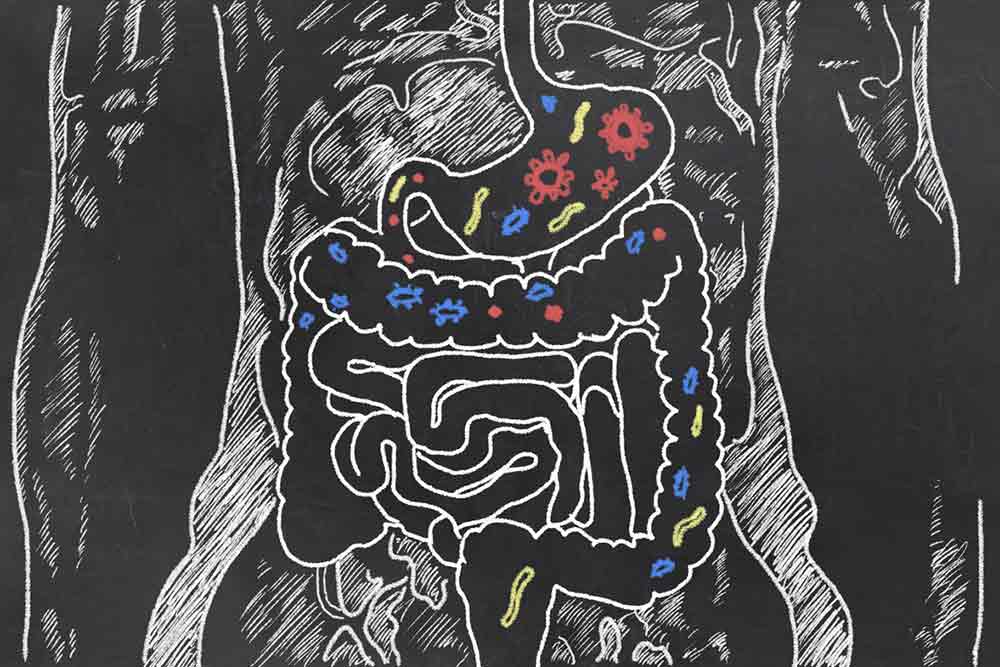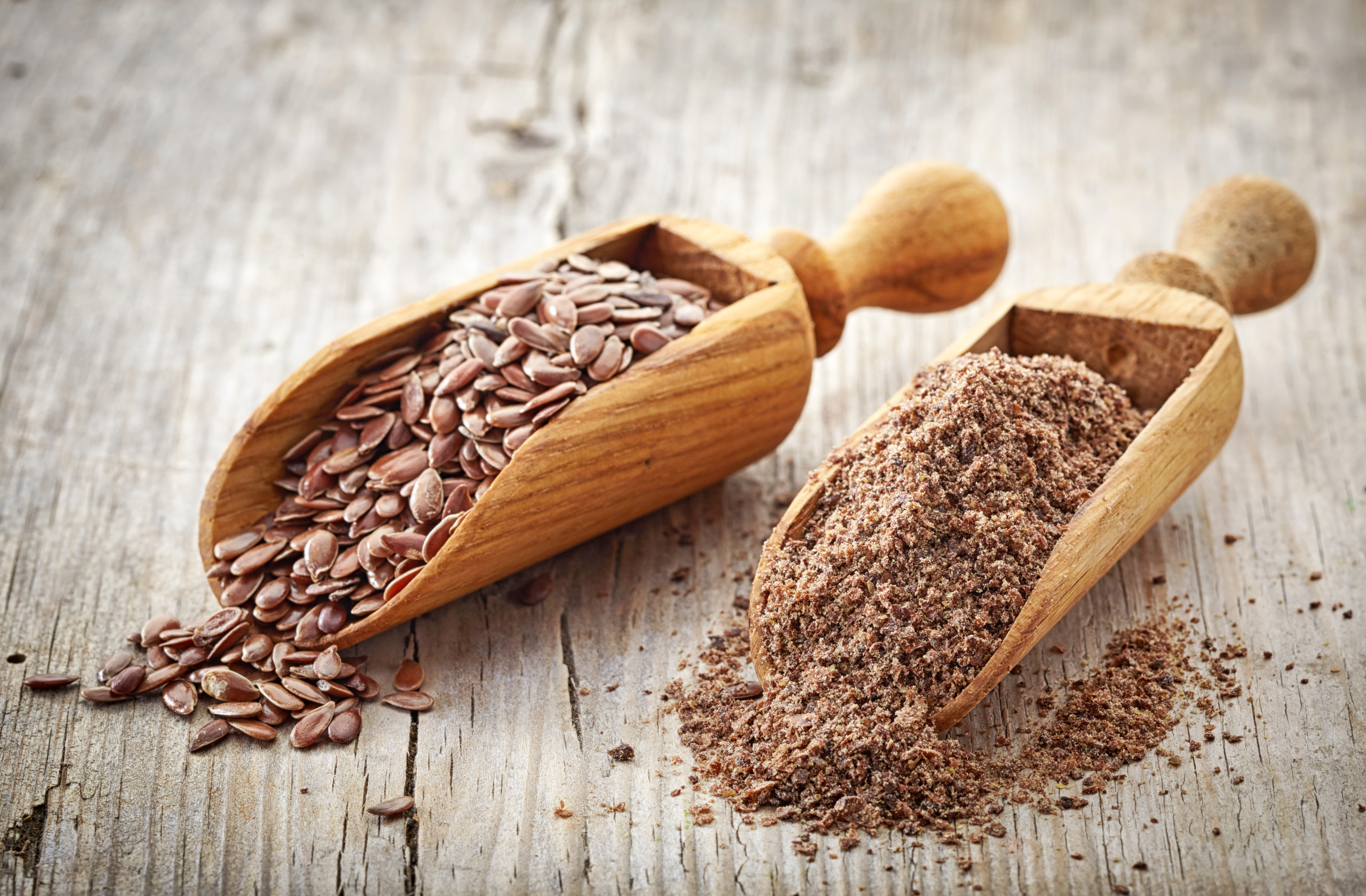Over the last few decades, we have seen dietary guidelines change drastically in an attempt to better meet the health needs of the population. While many of these changes have been obvious (eat more vegetables, for example), some have not – with one change being questioned above all others.
Yep, you guessed it – a reduction in red meat consumption.
However, recent evidence suggests that red meat may not be as harmful as first thought. Moreover, it is thought that it may even contain certain nutrients that could actually be beneficial to health.
But is this really the case?
What are the pros and cons of red meat?

When it comes to red meat, we can highlight several positives that are associated with its consumption. Similarly, we can also provide some insight into the potential negatives – which is exactly what I am going to do here (Li, 2005; McAfee, 2010).
Benefits of eating red meat
First and foremost, red meat is full to the brim with high-quality protein. This means that it has the potential to enhance muscle and bone health, while also assisting people to manage body composition changes.
Moreover, it also contains large quantities of omega-3 fatty acids, vitamin B12, niacin, zinc, and iron – all of which are very important nutrients that play roles in the maintenance of metabolic, cardiovascular, and brain health.
So yes, red meat has some obvious benefits.
Negatives of eating red meat
While there are indeed positives associated with eating red meat, I cannot move forward without addressing the negatives too.
Asa general rule of thumb, red meat contains a rather significant amount of saturated fatty acids. This is truer for particular fatty cuts of meat, such as mince, chops, and certain types of steak (among many more). Increases in saturated fat intake have been shown to increase blood cholesterol levels, which is known to contribute to the onset of cardiovascular disease (CVD).
While this risk can be mitigated by eating leaner cuts of red meat, it still deserves mention as it can be considered a significant negative – especially for those who are already at a high risk of developing CVD.
Processed vs unprocessed meats
I have already highlighted the fact that there is a difference between lean and fatty cuts of red meat – but what about processed vs unprocessed meat?
Well, I can tell you now that there is a substantial difference (Rohrmann, 2016).
Processed meats (think hams, salami, and bacon) have undergone some pretty significant changes during preparation, in which they are treated with a number of unique preservatives and nitrates. Moreover, they also tend to be higher in saturated fats, cholesterol, and salt.
Why does this matter?
Well, research has shown that simply consuming one serve of processed meats per day can significantly increase your risk of developing CVD, diabetes, and cancer.
And the kicker here?
These associations are not always seen with unprocessed red meat.
Is red meat carcinogenic?
A question I always get asked when discussing this topic goes a little something like this: “Is red meat a carcinogen?”
And it comes down to the fact that there is a growing body of evidence demonstrating that those individuals who eat a lot of red meat (both processed and unprocessed) tend to be at a higher risk of developing colorectal cancer than those who don’t eat any red meat at all.
However, there is more to this story than meets the eye (Domingo, 2017).
See, to date, there is no clear evidence suggesting that red meat itself is mechanistically carcinogenic.
What do I mean by this?
Well, while people who eat a lot of red meat are more likely to see an increase in cancer risk, we don’t actually know if the red meat is causing it, because there is no evidence showing that it can cause it.
With this in mind, it is more likely that people who eat a lot of meat don’t eat a whole lot of vegetables. By extension, this means that their fiber intakes are going to be quite low – and we know that fiber helps prevent colorectal cancer.
Moreover, we also know that the way in which red meat is cooked can have an impact on carcinogenic factors. For example, it is well established that charcoal (and other burnt organic compounds) are carcinogenic to humans when consumed.
This means that if you cook your red meat at high temperatures, in which it is burned, then it might become carcinogenic – but it does not mean that red meat itself is inherently carcinogenic.
Does red meat cause disease?
What about red meat health risks? I have mentioned that red meat consumption has been linked to colorectal cancer, but what about other diseases?
Does red meat cause cancer?
I think I have already alluded to the fact that red meat may not cause cancer – however, it would be negligent of me not to mention the facts.
Higher red meat intakes (again, both processed and unprocessed) have been linked to an increased risk of prostate cancer, breast cancer, and pancreatic cancer, in conjunction with the already discussed increased risk of colorectal cancer (Wolk, 2017).
Does red meat cause heart disease?
Much like cancer, there is a growing body of evidence clearly demonstrating that higher consumptions of red meat (especially of the processed kind) have an association with an increased risk of heart disease – likely through an increase in blood cholesterol levels (Bronzato, 2017).
Now, although this association does tend to be less significant with unprocessed red meat, there is still a chance that it may increase heart disease risk. This holds especially true for people who already have high cholesterol levels.
While this effect is likely to be dose-dependent (AKA the more you eat, the greater the risk), it is important to note that it does exist.
Does red meat cause diabetes?
Much like the evidence listed above, there is some research suggesting that high consumptions of processed red meat can increase the risk of developing type II diabetes, although the mechanisms for this remain unknown (Pan, 2011).
Again, this association is less for unprocessed meat, unless it is cooked and charcoaled in high temperatures – in which case it may become damaging (Liu, 2017).
You may also like: The Importance of Nutrition on Brain Health
What does the research say?
Taking all of this into consideration, I wanted to provide some insight into what prompted me to write this article. A new study has made a bit of splash in the health industry of late because it has gone against what many would consider being ‘conventional wisdom’ (Johnston, 2019).
See, this study (written by a panel of very well-regarded experts in the field) collated a huge amount of research on red meat consumption and concluded that red meat consumption is highly unlikely to increase disease risk.
Why?
As I said above, there isn’t really any evidence to indicate that it can cause disease.
And this holds especially true for lean sources of unpossessed meat, which are more likely to have positive health effects rather than negative ones.
In fact, this study also collated several research trials where the authors reduced the red meat consumption of their participants quite drastically but saw no improvements in health – and this includes cancer risk, diabetes, and CVD.
So why is this the case?
What about the previous studies on red meat consumption?
As I alluded to above, all previous research has simply looked at associations between red meat consumption and disease. In this manner, they have taken a snapshot of the population at a singular moment in time and then observed if any potential relationships exist.
While this does indeed tell us that people who eat more red meat are more likely to experience disease, it doesn’t give us info into why this might be the case. And it certainly does not tell us whether red meat is the causing factor, or not.
In my mind, all that the previous research tells us is that people who eat a lot of red meat are likely to be less healthy than their vegetarian counterparts. This could be because they exercise less, eat fewer vegetables, or eat more junk food – we just don’t know.
This is why association studies are not the best way to conduct this type of research. However, for a long time, it was all we had.
What are the current recommendations for red meat consumption?
So, how much red meat is recommended?
At this point in time, the 2015–2020 Dietary Guidelines for Americans recommend limiting your red meat intake (inclusive of both processed and unprocessed meat) to a single serving per week – which is practically nothing.
However, these guidelines were based upon much of the lower quality evidence I discussed at length above.
New recommendations for red meat consumption
Taking this into consideration, the new study discussed above made somewhat controversial recommendations around red meat consumption. Some that go against those made by the Dietary Guidelines for Americans.
What were they?
To keep your red meat intake exactly the same as it is now.
See, given the fact that there is no evidence to suggest that decreasing your red meat intake will have any positive health outcomes, then there is no point in doing it. Instead, you should probably focus on other factors to improve health.
What factors I hear you cry?
- Get more sleep
- Exercise more
- Eat more vegetables
Simple.
Red meat and the planet
The last thing I wanted to address is the role that red meat plays with the environment. A common criticism I hear when discussing red meat is that it has a significant (negative) environmental impact (Godfray, 2018).
But is red meat bad for the planet?
And in some ways, yes – it appears that it can be.
First and foremost, the animals from which red meat comes from (with particular focus on cattle) actually increase carbon admissions. As we know, this is thought to be one of the key drivers for global warming.
Secondly, a significant amount of land is required to farm red meat sources. This means that we are sacrificing plant growth (which can help offset carbon emissions) for food sources that make the environment worse.
Finally, the grains used to feed most red meat sources also require farming. As a result, we have seen significant damages incurred to the environment to prepare the land for grain production. This can have an impact on the local plant and wildlife.
So, from a purely environmental perspective, there is obvious merit in opting for a diet that is richer in plants. Moreover, choosing grass-fed sources of meat (rather than grain-fed) can also offset some of these damages. This is because their feed acts to naturally offset many of the carbon emissions they produce.
Take-home message
It turns out that red meat is not as bad as we first thought. In fact, assuming that the red meat you eat is of the unprocessed kind, and you live a fairly healthy lifestyle, then there is a reason to believe that it will not have any impact on your health.
Talk about good news!
However, when it comes to red meat consumption, there is always need to consider the environmental impact, and steps you can take to help offset them!
References
Li, Duo, et al. “Lean meat and heart health.” Asia Pacific Journal of Clinical Nutrition 14.2 (2005): 113-119.
McAfee, Alison J., et al. “Red meat consumption: An overview of the risks and benefits.” Meat science 84.1 (2010): 1-13.
Rohrmann, Sabine, and Jakob Linseisen. “Processed meat: the real villain?.” Proceedings of the Nutrition Society 75.3 (2016): 233-241.
Domingo, José L., and Martí Nadal. “Carcinogenicity of consumption of red meat and processed meat: a review of scientific news since the IARC decision.” Food and chemical toxicology 105 (2017): 256-261.
Wolk, Alicja. “Potential health hazards of eating red meat.” Journal of internal medicine 281.2 (2017): 106-122.
Bronzato, Sofia, and Alessandro Durante. “A contemporary review of the relationship between red meat consumption and cardiovascular risk.” International journal of preventive medicine 8 (2017).
Pan, An, et al. “Red meat consumption and risk of type 2 diabetes: 3 cohorts of US adults and an updated meta-analysis.” The American journal of clinical nutrition 94.4 (2011): 1088-1096.
Liu, Gang, et al. “Cooking methods for red meats and risk of type 2 diabetes: a prospective study of US women.” Diabetes care 40.8 (2017): 1041-1049.
Johnston, Bradley C., et al. “Unprocessed Red Meat and Processed Meat Consumption: Dietary Guideline Recommendations From the Nutritional Recommendations (NutriRECS) Consortium.” Annals of Internal Medicine (2019).
Godfray, H. Charles J., et al. “Meat consumption, health, and the environment.” Science 361.6399 (2018): eaam5324.
You Might Like
The Truth About Red Meat Consumption
Over the last few decades, we have seen dietary guidelines change drastically in an attempt...The Importance of Nutrition on Brain Health
What you put into your body is damn important. I mean, without providing your body...The Ingredient in Kale That May Promote Longevity
Kale has fast become one of the most talked-about foods in the health industry, with...Caffeine May Help or Hinder Athletic Performance
Most people have heard that caffeine enhances athletic performance, in fact, current guidelines recommend ingesting...Can Intermittent Fasting and Exercise Prevent Cancer?
It could easily be argued that we are living in the best time in human...How Long Does It Take To Reverse The Effects Of A Bad Diet?
Hunter Bennett You know that eating a good diet is important. But did you know...Does Dark Chocolate Aid In Muscle Recovery?
Hunter Bennett What do exercise enthusiasts, elite athletes, and weekend warriors all have in common?...Processed vs. Unprocessed Foods
Hunter Bennett Over the last few years, we have seen a bit of a change...Regaining Homeostasis With Diet & Exercise
Hunter Bennett In scientific literature, health is often defined as a state of complete physical,...Fasted Weight Training: Does It Help With Fat Loss?
Hunter Bennett The last few years have seen the health and fitness landscape evolve in...How Intermittent Fasting Affects Sleep
Hunter Bennett Intermittent fasting has fast become one of the most popular dietary trends of...Prolonged Fasting for Health & Longevity
Hunter Bennett Throughout history, there has been one thing sought above all others. Something that...Intermittent Fasting For Weight Management & Health
Hunter Bennett Every single week there seems to be some brand new diet on the...The Ketogenic Diet: How It Affects Athletic Performance
Hunter Bennett Every week a new way of eating hits the mainstream media. They are...Canadian Food Guide- A Dietary Guideline
Hunter Bennett The Canadian government made some rather large changes to their dietary guidelines. Like,...The Effects of Exercising On a High Fat Diet
Hunter Bennett When it comes to diet, there is an incredible amount of information out...Resistance Training & Protein Supplements: What You Need to Know
Dayton Kelly This article was adapted from a combination of speeches given at the European...FODMAPS and Exercise
Dayton Kelly FODMAPs: A culprit in exercise-induced gastrointestinal distress and an explanation for athlete adoption...Can Nitrate Rich Vegetables Boost Your Endurance?
Dayton Kelly This article was adapted from a combination of speeches given at the...Gluten-Free Diet and Exercise
Dayton Kelly This article was adapted from a combination of speeches given at the European...6 Vegan Athlete Meal Plan Ideas to Boost Performance
Jessica Gillespie-Friesen Animal products contain essential nutrients that contribute to proper body functioning but also...Relative Energy Deficiency: Nutrition For Endurance Athletes
Evan Stevens Speak with any endurance athlete and the topic of conversation almost always steers...What Are Probiotics and Prebiotics?
Alyssa Bialowas In response to the current cultural nutrition trend surrounding probiotics and supplements, pharmacies...3 Important Things Athletes Should Consider Before Going Vegan
Alyssa Bialowas The vegan diet is becoming increasingly popular among the general population and is...Do Ketogenic Diets Reduce Anaerobic Performance?
Evan Stevens Ketogenic diets have come to the forefront of popular health fads in the...Does the Keto Diet Affect High-Intensity Exercise Performance?
A Review by Alyssa Bialowas The ketogenic diet has been making waves due to its...The Best Way to Prevent Gut Rot During Your Workout
Alyssa Bialowas One of the worst things that can happen to you before you start...Everything You Need To Know About Protein Supplements
Evan Stevens The study of protein is a huge undertaking. It is one of the...Is There a Magic Bullet to Protein Consumption?
Evan Stevens In the last three parts we discovered that a lot of what we...Does Protein Impact Trained Athletes Differently?
Evan Stevens Previously at Forever Fit Science we looked at how science changes and why...Which type of Protein Provides the Best Workout Recovery?
Evan Stevens In our previous article, The Ever Changing Science of Protein, discussed how science...The Ever Changing Science of Protein
Evan Stevens You would think that by now we would have a pretty firm grasp...Why Milk is an Effective Recovery Drink for Female Athletes
Mojtaba Kaviani, Ph.D., CEP Cow milk contains protein, casein, carbohydrates, fat, vitamins and minerals, which...Anti-Inflammatory Foods in Your Diet (and What to Avoid)
Moji Kaviani, Ph.D., CEP Inflammation is part of the body’s natural defense system. Western medicine...Can Caffeine Improve Sprint Time In Elite Swimmers?
A Review by Alyssa Bialowas Caffeine is an ergogenic aid, meaning it’s a substance that...The Next Best Supplement For Exercise Performance
A Review by Alyssa Bialowas Korean Ginseng is a nutraceutical herbal supplement, that when ingested...DHA Supplementation Reduces Inflammation After Exercise
Alyssa Bialowas Introduction to DHA Supplementation Docosahexaenoic acid (DHA) is an omega-3 fatty acid. It...Citrus Flavonoid Supplementation May Improve Exercise Performance
Alyssa Bialowas The proper diet and supplementation regimen can improve exercise performance in athletes. Research...Impact Of Omega-3s Paired With Eccentric Exercise
Alyssa Bialowas Enhanced health immunity during the holiday season is crucial to preserve the capacity...Main Food Groups: Candy Canes, Cookies, Chocolate and Eggnog
Moji Kaviani, Ph.D., CEP If your main food groups are Candy Canes, Cookies, Chocolate and...Hydration and Performance, Part 3: MANAGING HYDRATION
Evan Stevens When we sweat we lose more than just water. That fine, salty coating...Hydration and Performance, Part 2: ELECTROLYTES
Evan Stevens Electrolytes and the Right Drink For You Welcome back to our continuing discussion...Hydration and Performance, Part 1: FLUIDS
Evan Stevens We previously discussed how masters level athletes’ nutritional needs are almost no different...Athletes May Be Suffering From Vitamin D Deficiency
Moji Kaviani, Ph.D., CEP If you are not getting out a few times per week...Dietary Strategies For Managing Rheumatoid Arthritis
Mojtaba Kaviani, Ph.D., CEP Rheumatoid arthritis (RA) is a chronic condition in which the body’s...Do Masters Athletes Need Specific Nutrition?
Evan Stevens Nutrition. It’s a topic that stirs debate at every mention. One day you...Hydration For Hockey Performance
Moji Kaviani, Ph.D., CEP Ice hockey is a team sport that requires players to have...Flaxseed Supplementation, Walking, and Hypertension
Hypertension is a chronic condition that can lead to cardiovascular disease or stroke, if not treated...How Will Turkey Dinner Impact Your HIIT Workout?
Moji Kaviani, Ph.D., CEP Who doesn’t like to get more health benefits while they are...How Fruits & Veggies Counteract Chronic Disease
Evan Stevens The CDC recently released an article detailing how we should start emphasizing the consumption...Protein Intake For Masters Athletes
Moji Kaviani, Ph.D., CEP There is robust evidence supporting that master athletes (40 years and over)...8 Ways to Augment The Oatmeal Breakfast
Amanda Carney Breakfast is considered the most important meal of the day, as it should...Is Milk Beneficial for Exercise Recovery?
Moji Kaviani, Ph.D., CEP The animal source proteins such as milk, containing 80% casein and 20%...6 Ways To Avoid Hunger That Leads To Overeating
Alyssa Bialowas Dieting and body image in sport can lead to the development of either...Effect Of Gluten-Free Diet On Endurance Performance
Moji Kaviani, Ph.D., CEP Non-celiac Athletes Approximately 70% of endurance athletes experience gastrointestinal distress during their...Exercise Your Gut (Microbiome)
Julia Basso Affiliation: New York University, Center for Neural Science As a neuroscientist who studies...Pump Up Your Performance With Beet Root Juice!
Dayton Kelly This article was adapted from a combination of speeches given at the European...Health Challenges and Cleanses – A Help or Hinder?
Gillian White – MSc, PhD (Candidate), University of Toronto Health Challenges and Cleanses – Helping...Post Exercise Meal Impact On Triglyceride & Cholesterol Levels
M. Kaviani Obesity is a leading global health problem and is associated with multiple chronic...Food vs Protein Supplements
Evan Stevens The final talk in this session was a breath of fresh air for...Precision Nutrition and You: Nutrigenomic Approaches To Disease And Health
Evan Stevens We have previously discussed the growing field of nutrigenomics here at Forever Fit...Fill Up On Omega-3s
Dayton Kelly This article was adapted from a combination of speeches given at the European...Stopping To Drink: Is It Worth The Time?
Dayton Kelly This article was adapted from a combination of speeches given at the European...Re-Thinking Gender Based Nutrition
Dayton Kelley Gender Based Nutrition This article was adapted from a combination of speeches given...The Truth About Carbo Loading
Evan Stevens Carbo Loading Carb loading, for those who haven’t been around sport for the...Protein Quality Dictates Recovery, Not Timing
Evan Stevens “Oh, I’m sore today.” “I feel like it’s getting harder to work out...Exercise Enjoyment May Affect Post-Workout Eating Habits
Catherine O’Brien While a healthy lifestyle is dependent upon various factors, it is widely accepted...Effects of Alcohol On Your Workout
Gillian White – MSc, PhD (C), University of Toronto, Department of Exercise Sciences Is a...Counting Calories May Prevent Overeating
Dayton Kelly As we all know, the food we eat has an enormous impact on...3 Tips To Minimize Everyday Chemicals
Adriane Cook B.S. Kinesiology, Michigan State University www.balancewithme.com Chemicals, toxins, and pollution, oh my! Do...Coffee: Fitness Friend or Foe?
Adriane Cook B.S. Kinesiology, Michigan State University www.balancewithme.com Nothing quite unites a country like its...Sugar – Is It Hurting Your Healthy Lifestyle?
Matt Kiszka Sometimes it seems like sugar is in everything we eat. The obvious culprits...How Much Protein Do Women Really Need?
Lauren Rubadeau How Much Protein Do Women Need Based on their Activity Level? With New...Drink, Be Merry…and Exercise!
Julia Basso – PhD Most of us engage in a drink or two (or three…)...8 Ways to Prevent Weight Gain During the Holidays
Alley Rubadeau 8 Ways to Prevent Weight Gain During the Holidays You made it through...Food for Fuel: Healthy Granola Bar Recipe
Forever Fit Science Master Swim Athletes and U.S. Air Force Lieutenants, The Holman Sisters, share...BHB Supplements and Energy
Evan Stevens BHB Supplements and Energy We’ve already heard about low CHO (low carbohydrate) diets...Fat, Carbs, Protein and Recovery. Is There A Silver Bullet?
Evan Stevens The first talk in this session was very similar to the talks that...Nutrition Takeaways: Gatorade Sport Science Institute
Evan Stevens The main theme of this session was protein supplementation before bed to improve...Gene-Based Nutrition: Can It Benefit You?
Evan Stevens Based on a talk by Lisa Cianfrini at Take Control of Your Health/Wellness...Exercise Nutrition Symposium
Evan Stevens This past Saturday, April 2nd, I had the wonderful opportunity to attend the...7 Delicious Options to Increase Your Omega-3s
Amanda Carney Whether you are an athlete, partake in regular exercise or just want to...5 Easy, Heart-Healthy Breakfast Ideas
Amanda Carney – Holistic Nutrition Coach A healthy heart equals a healthy body, and we want...Reward Yourself: Post-Workout Vanilla Blueberry Smoothie
Author: Amanda Carney As a health coach, I am constantly receiving questions about what to...Three Health Chia Seed Pudding Recipes For You and Your Family
By: Amanda Carney When you think of pudding, chances are you imagine a decadent sugar-laden...The Importance of Food: How Should I Eat?
Author: Evan Stevens, MSc in Nutritional Science In my previous article, titled “What Should I Eat...The post The Truth About Red Meat Consumption appeared first on ForeverFitScience.






















































































No comments:
Post a Comment